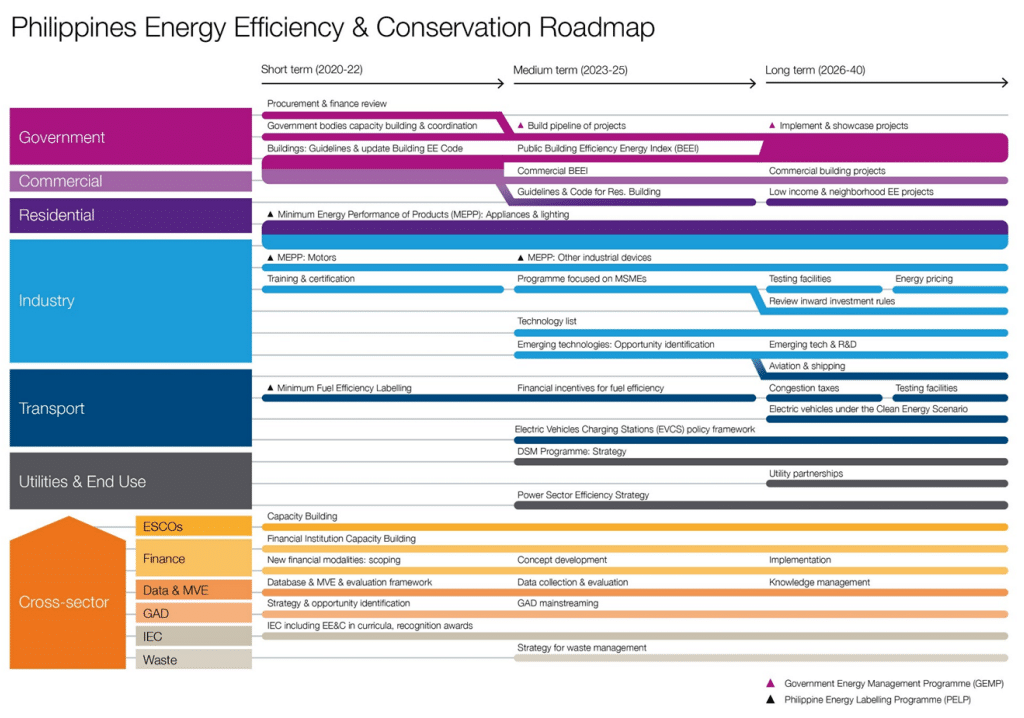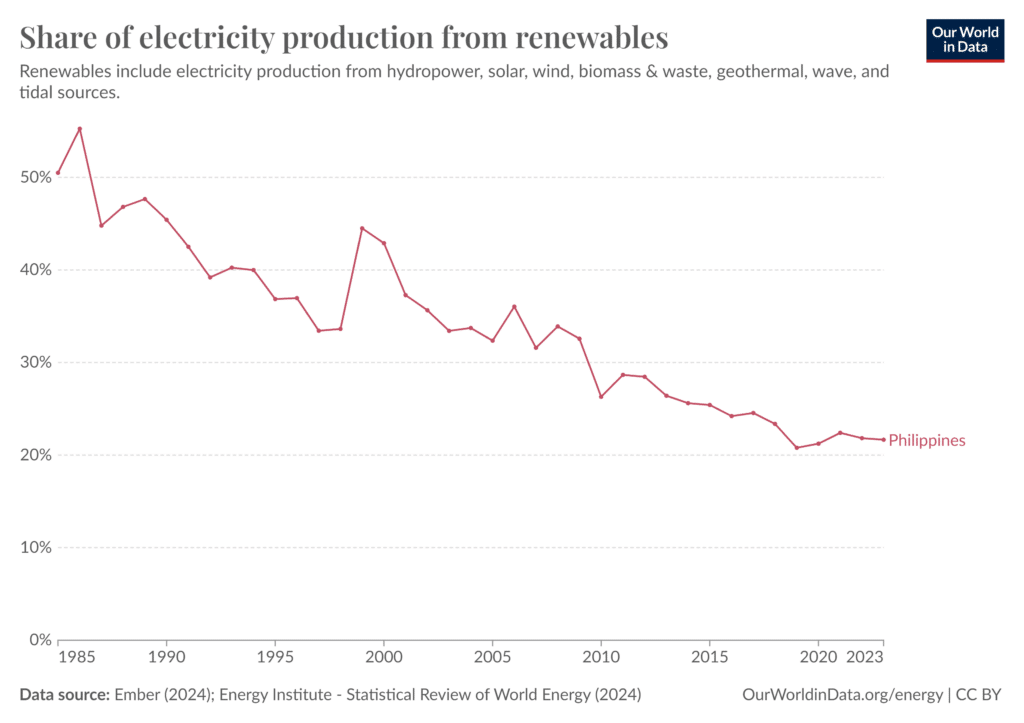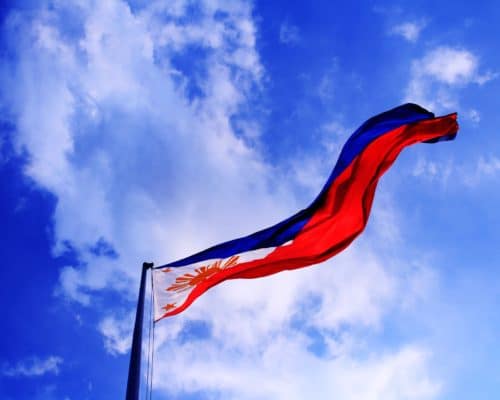Energy Efficiency in the Philippines: The NEECP
Source: Eco-Business
17 October 2024 – by Eric Koons
Energy efficiency in the Philippines is a critical component of the nation’s sustainable development strategy. As the country continues to experience rapid economic growth and urbanisation, energy demands are escalating. To meet these demands and align with its net-zero emissions goals, the country needs to develop renewable energy capacity and minimise demand growth. Improving energy efficiency in the Philippines is critical to this transition.
National Energy Efficiency and Conservation Program and Energy Efficiency Measures
A core part of this push for energy efficiency is the National Energy Efficiency and Conservation Program (NEECP), which was updated in 2023. The NEECP is a framework that promotes energy efficiency across the Philippines. The program aims to make energy efficiency a national ethos, integrating it into all societal and economic sectors.
The program encompasses a broad range of attributes across the economy and government. This includes policy development to create a supportive regulatory framework, institutional arrangements for effective implementation and capacity-building initiatives to educate stakeholders on energy efficiency measures and practices.
Philippines Energy Efficiency and Conservation Roadmap
The Philippines’ Energy Efficiency and Conservation Roadmap is the blueprint of how the country will achieve its energy efficiency goals in line with the NEECP between 2023 and 2050. The roadmap outlines specific goals to reduce energy consumption, promote decarbonisation and meet renewable energy targets.

Encouraging Investment in Energy Efficiency Projects
The roadmap emphasises policy reforms, such as implementing energy efficiency standards, labelling appliances and equipment and mandating regular energy audits for designated establishments. It also focuses on technological advancements by promoting the adoption of energy-efficient technologies across all sectors, including advanced lighting systems, high-efficiency motors and energy management systems. Financial incentives, like tax breaks and subsidies, are provided to encourage investments in energy efficiency projects and renewable energy technologies.
Why Should the Philippines Care About Energy Efficiency?
Beyond meeting its domestic and international commitments, the Philippines faces serious impacts from climate change. Reducing overall greenhouse gas emissions is the core of climate change mitigation, which typically takes two forms: transitioning to low-carbon energy sources and reducing overall energy demand.
Improving energy efficiency is one of the most impactful ways to reduce energy demand, particularly for a country like the Philippines, which is rapidly going through urbanisation. Meanwhile, energy demand is steadily growing.
Total Energy Consumption
In recent years, the Philippines’ total energy consumption has been rising. The country’s final energy consumption reached 35.86 million tonnes of oil equivalent (MTOE) in 2022 – up 38% compared to 2012.
Challenges in reducing countrywide emissions relate to the heavy reliance on non-renewable energy sources and inefficiencies in energy use.
Share of Renewables in Electricity Production
The overall capacity of renewable energy is increasing, yet the share of renewable energy out of the country’s total energy supply has been declining for decades. This is primarily due to the country’s rapid industrialisation, where fossil fuel growth has outpaced renewable energy growth.
As of 2023, renewables accounted for about 22% of the country’s total electricity generation, down from 55% in 1986. This is led by a mix of renewables, primarily geothermal, at close to 10%, hydropower at 8%, solar at 2% and wind at 1%.

The Philippine government has set ambitious targets to increase the renewable energy share to 35% by 2030 and 50% by 2040. Meeting these targets will require significant domestic and foreign investment. However, meeting these targets is critical, as they are necessary to align with the Paris Climate Agreement.
Furthermore, renewables are essential in improving the Philippine’s energy efficiency and aligning with the NEECP. They provide cleaner and more sustainable energy sources that can be harnessed locally, reducing transmission losses associated with long-distance power delivery. Additionally, they decrease the reliance on imported fossil fuels, thereby improving energy security and reducing the environmental impact of energy production.
CO2 Fuel Combustion and CO2 Emissions
The remaining 78% of the country’s electricity and 88% of its total energy comes from fossil fuels. These fuel sources are the leading contributor to the country’s 150 million tonnes of CO2 emissions annually. On a per capita basis, this amounts to about 1.3 tonnes of CO2 per person, significantly lower than the global average of around 4.7 tonnes per person.
However, compared to neighbouring Southeast Asian nations, such as Indonesia (2.6 tonnes per capita) and Vietnam (3.5 tonnes per capita), the Philippines has lower emissions but faces a growing trend due to economic development. Within the last two decades, per capita emissions have increased 50%.
Crude Oil Production
This rising emissions rate is partly due to the country’s reliance on imported oil. Oil plays a significant role in the Philippines’ energy mix, accounting for 42%. However, domestic production is minimal, leading to a heavy dependence on imports.
This dependency poses economic risks due to fluctuating global oil prices and affects energy security. Oil consumption also negatively impacts energy efficiency, as reliance on fossil fuels perpetuates a fossil fuel-based economy and slows the shift towards a low-carbon future.
The Crucial Role of the NEECP in the Philippines’ Future
The NEECP plays a critical role in the country’s push to reduce emissions by integrating energy efficiency initiatives with renewable energy goals. Following through with the NEECP and improving energy efficiency is critical to achieving the nation’s ambitious target of reducing countrywide emissions by 75% by 2030.
by Eric Koons
Eric is a passionate environmental advocate that believes renewable energy is a key piece in meeting the world’s growing energy demands. He received an environmental science degree from the University of California and has worked to promote environmentally and socially sustainable practices since. Eric’s expertise extends across the environmental field, yet he maintains a strong focus on renewable energy. His work has been featured by leading environmental organizations, such as World Resources Institute and Hitachi ABB Power Grids.
Read more








